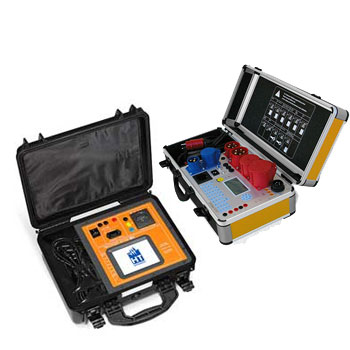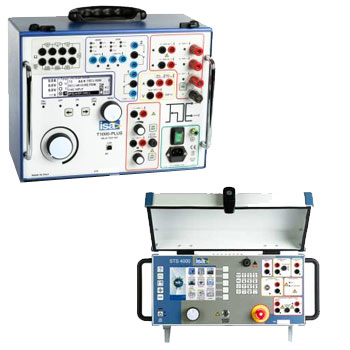The MINIMESS® 1215 DVGW gas charging valve serves as system access for gas pressure systems and provides a connector for control measuring devices according to DVGW worksheet G491 for pressure measurement and gas sampling. Further advantages are its small coupling thread and compact design. Suitable for operating pressures up to 250 bar.
 Datasheet Datasheet
|
|
 Datasheet Datasheet
|
 Gaseous Hydrogen Gaseous Hydrogen |
- Compact design – ideal for installations in confined spaces
- Enables pressure monitoring, venting, filling, draining, and sampling during operation
- 100% leak-free coupling under system pressure thanks to special soft-seal technology
- Available sealing materials: NBR, FKM (Viton), EPDM
- Wide variety of metric and international thread types
- Materials: Free-machining steel 1.0718 or stainless steel 1.4571
- Maximum operating pressure: up to 63 MPa
- Temperature range (depending on seal): from -25 °C to +200 °C
- Also available with plastic cap and vibration protection
 Catalog Excerpt Catalog Excerpt |
The Minimess®-test point 1215 needs less space because of its small screw thread. It is available in free-cutting or high-grade steel with several metric and international connecting threads. Minimess®-Test Point 1215 is available in a huge range of versions and accessories.
 Certificate Certificate |
 Datasheet Datasheet |
 Datasheet (Gas) Datasheet (Gas) |

Minimess® Couplings – Series 1215 (M12×1.5) – compact test & service ports up to 630 bar
Minimess® Series 1215 is the compact standard for leak-tight measurement, venting and filling points with M12×1.5 thread. The couplings can be connected under pressure, couple and uncouple drip-free, and enable rapid diagnostics in hydraulics, pneumatics and HVAC/R—for mobile and stationary systems.
Features (series-dependent): working pressure up to 630 bar, materials zinc–nickel plated steel or 316/316L stainless steel, seals NBR/FKM/EPDM/PTFE, integrated check valve, dust cap, color coding, adapters to 7/16″-20 UNF (DN2/DN4 microbore hoses) and G 1/4 for gauges/transmitters.
ICS Schneider Messtechnik supports selection, adaptation, hose assembly and calibration—from a single port to complete service kits.
FAQ on Minimess® Series 1215 (M12×1.5)
Answers on specs, media, sealing, installation, adapters, safety and best practices.
What does “1215” stand for and where is it used?
“1215” designates the M12×1.5 interface. It’s used as a compact test/service port on hydraulic power packs, mobile machinery, test rigs, HVAC/R units and lubrication circuits.
What pressure and temperature ranges are covered?
Typically up to 630 bar working pressure (series-specific). Temperature usually −30…+100 °C, up to about +200 °C with FKM. Always consult the datasheet for exact limits.
Which media are suitable?
Hydraulic oils (mineral/synthetic), water–glycol, diesel/fuels, air/inert gases. For aggressive media choose stainless versions and PTFE sealing.
Zinc–nickel steel or stainless—how to choose?
Zinc–nickel is rugged and economical for standard environments. 316/316L is recommended for corrosive atmospheres, food/pharma, offshore or chemical exposure.
Which seal materials are available?
| Seal | Resistance | Typical use |
|---|---|---|
| NBR | Oils, diesel; −30…+100 °C | Hydraulic standard |
| FKM | Higher T, fuels/chemicals | High-temp/process |
| EPDM | Water/glycol, some steam | H2O/glycol systems |
| PTFE | Very broad chemical, high T | Process/chemicals |
Which adapters and hoses are offered?
Adapters to 7/16″-20 UNF (for DN2/DN4 microbore hoses), G 1/4 (BSPP) and other service ports. Hoses: DN2 up to 630 bar, DN4 up to 400 bar, plus PTFE-braided options for chemical/high-temperature duties.
Can it be safely coupled under pressure?
Yes. Series 1215 is designed for under-pressure coupling with low spillage. Align axially and push to the stop until the audible/tactile click confirms engagement.
How do I install a 1215 port correctly?
- Clean sealing faces and fit the correct O-ring/flat seal.
- Start the thread by hand, then tighten to the specified torque.
- For cylindrical BSPP/G adapters, do not use PTFE tape on cone/face—sealing is via the O-ring/face.
How do I avoid leakage and contamination?
Use dust caps, keep coupler/plug clean, protect the sealing cone, and clean before coupling if dirt/moisture is present.
Are color coding and ready-made kits available?
Yes—color caps/rings to mark measuring points (e.g., circuit A/B, low/high pressure). Service cases with 1215 couplings, hoses, gauges and adapters are available.
How do I connect gauges & transmitters?
Via adapters M12×1.5 → 7/16″-20 UNF (hose) or → G 1/4 for fixed gauges/0–600 bar sensors. For permanent monitoring consider check/isolating and pulse damping.
How many reuses are possible?
Metal parts are reusable many times. O-rings are wear parts—replace when damaged or aged.
What should I consider for bleeding/sampling?
Versions with an integrated needle allow controlled venting/draining. Always route to a suitable hose and catch container.
Safety notes
- Use only with approved media and within p/T limits.
- Wear PPE; consider pressure spikes.
- Check tightness before work; support/secure pressurized lines.
Common issues & quick fixes
- Seat leakage → inspect/replace O-ring, clean seat, verify torque.
- Hard to couple → check alignment, remove contamination, reduce Δp.
- Pressure drop → leak check hose/adapter, inspect check valve.
Do you support selection & calibration?
Yes—we specify materials/seals, define adapters/hoses, provide factory/DAkkS calibrations for gauges/sensors and can integrate IIoT gateways on request.













































































































































































